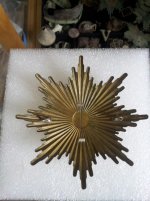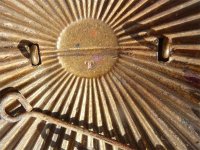chinstrap
Active member
This is a well-marked and named helmet to the Saxon 107th Reserve Regiment. It came with paperwork to Sanitats Unteroffizier Otto Arthur Frenzel 107R.
Markings on the left visor are 1904 106R 107 RR 13. On the right side visor is written what, with the benefit of the paperwork, I read as San Untoffiz Frenzel II 107. The size 56 is also stamped on this section. The numeral '6' or '9' is stamped in the interior strengthening disc below the spike base. Does anybody know what this signifies? There is also a stamp above the wappen fixing holes which appears to say ACTION GES. THIELE. I presume this is the manufacturer?
I have attached scans of the four copy documents I have. Three of these are Red Cross documents concerning his repatriation in February 1917. The fact that he was repatriated suggests to me that he was wounded but, as I understand it, these documents do not specifically say that he was wounded at the time of his capture on 15 July 1916 . I therefore wonder if there was a practice of exchanging medical personnel, as the document of 1916, listing a ‘transport sanitaires allemands’ , suggests to me that they might have been viewed and treated differently from others. I thought the places listed after each man's name might be prison camps with medical facilities, where they may have been used to care for wounded and sick German prisoners. However, the fact that the repatriation list includes men from a range of units suggests he was indeed simply wounded. I cannot read what I think is the place of capture ending in 318 on his Red Cross form, and do not understand the significance of the manuscript comments in French at the bottom of that form, although I understand the words.
All comments, ideas, information welcome.
Patrick
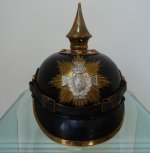
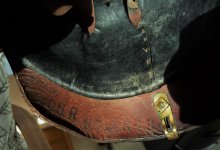
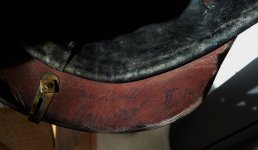
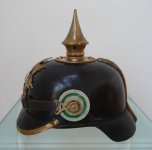
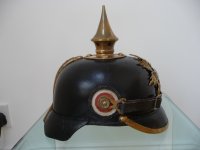
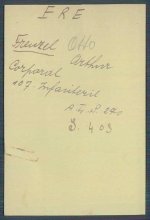
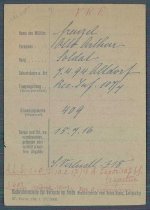
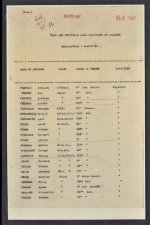
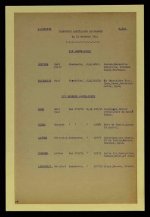
Markings on the left visor are 1904 106R 107 RR 13. On the right side visor is written what, with the benefit of the paperwork, I read as San Untoffiz Frenzel II 107. The size 56 is also stamped on this section. The numeral '6' or '9' is stamped in the interior strengthening disc below the spike base. Does anybody know what this signifies? There is also a stamp above the wappen fixing holes which appears to say ACTION GES. THIELE. I presume this is the manufacturer?
I have attached scans of the four copy documents I have. Three of these are Red Cross documents concerning his repatriation in February 1917. The fact that he was repatriated suggests to me that he was wounded but, as I understand it, these documents do not specifically say that he was wounded at the time of his capture on 15 July 1916 . I therefore wonder if there was a practice of exchanging medical personnel, as the document of 1916, listing a ‘transport sanitaires allemands’ , suggests to me that they might have been viewed and treated differently from others. I thought the places listed after each man's name might be prison camps with medical facilities, where they may have been used to care for wounded and sick German prisoners. However, the fact that the repatriation list includes men from a range of units suggests he was indeed simply wounded. I cannot read what I think is the place of capture ending in 318 on his Red Cross form, and do not understand the significance of the manuscript comments in French at the bottom of that form, although I understand the words.
All comments, ideas, information welcome.
Patrick










